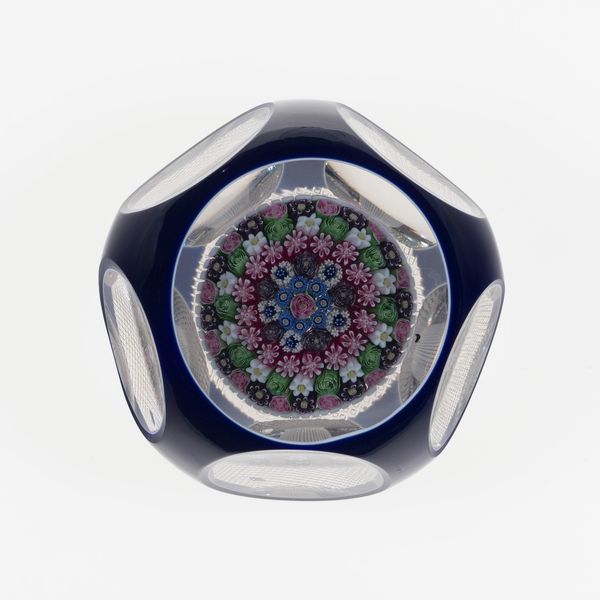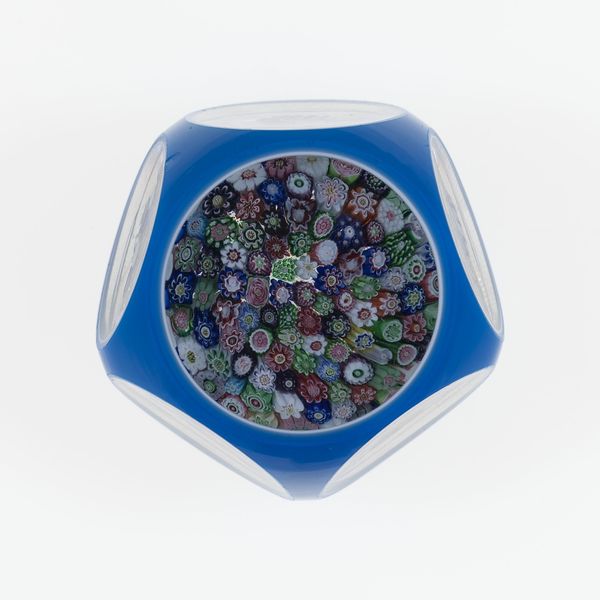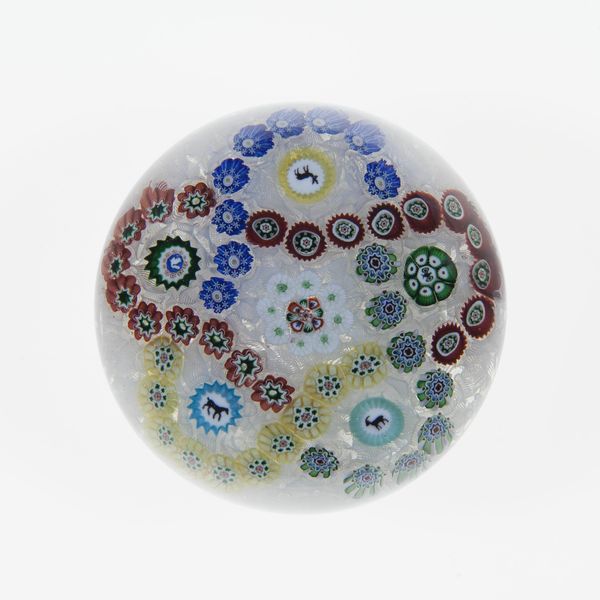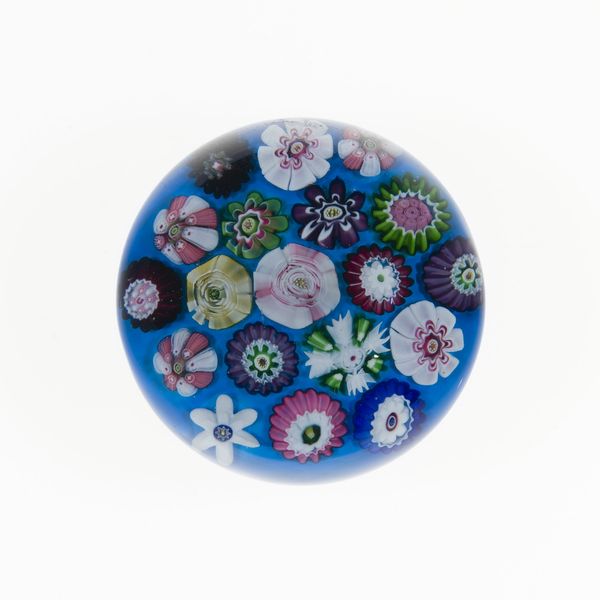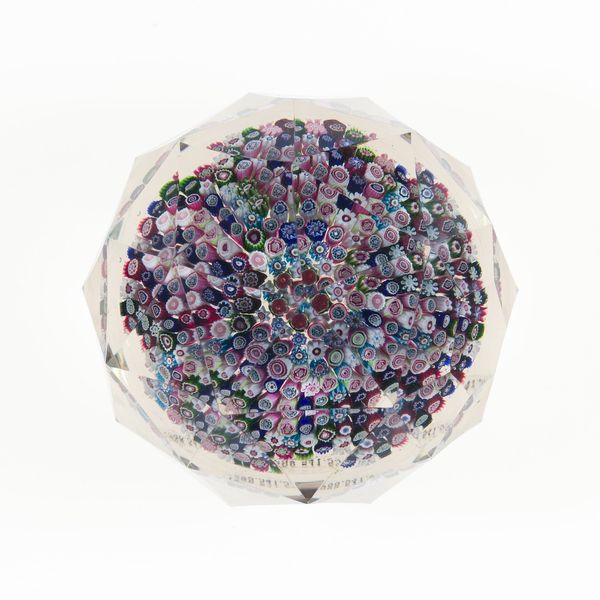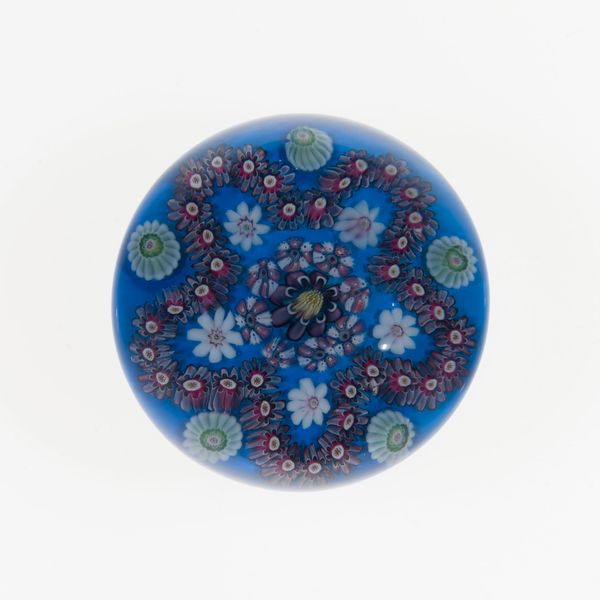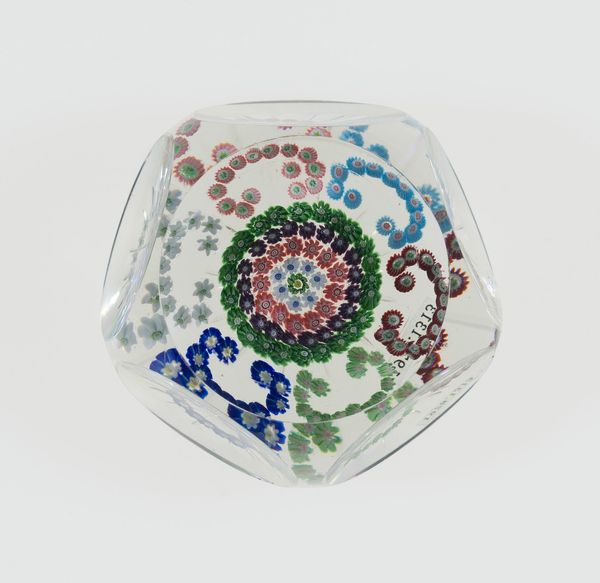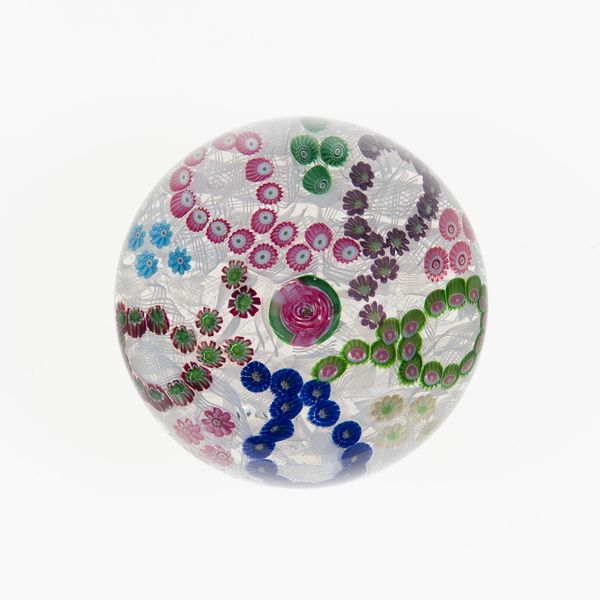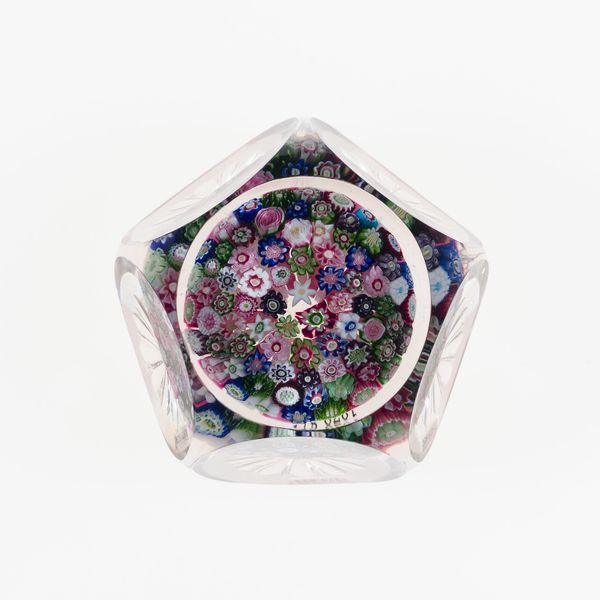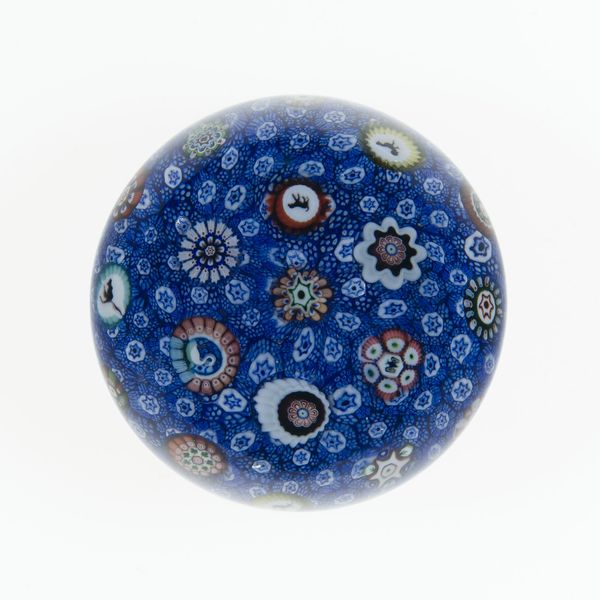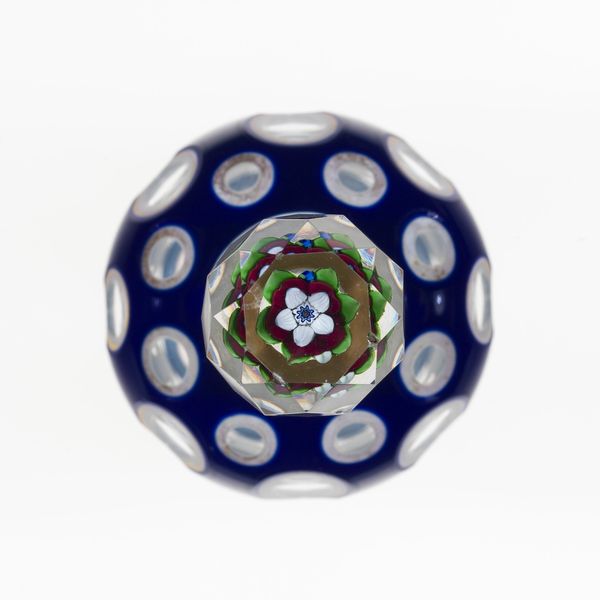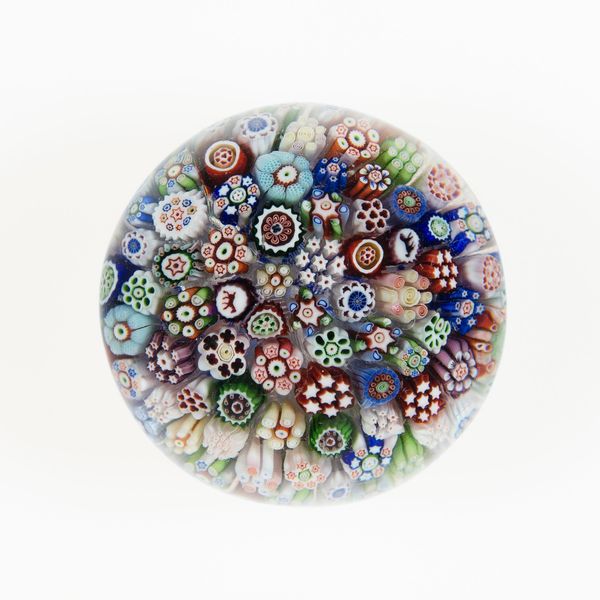
Dimensions: Diam. 7 cm (2 3/4 in.)
Copyright: Public Domain
Editor: So, here we have a "Paperweight" made by the Clichy Glasshouse, sometime between 1845 and 1855. It’s glass, and… well, it's a paperweight. I find the miniature floral arrangement inside to be very mesmerizing. How do you interpret this kind of contained beauty? Curator: I see a concentrated garden, preserved forever within glass. Doesn't it remind you of the Victorian era's fascination with collecting and classifying the natural world? The glass itself acts as a lens, distorting and magnifying the internal world. Editor: It does evoke a scientific collection, a little specimen preserved for study, now that you mention it. Is there a significance to the floral motifs beyond simple aesthetics? Curator: Absolutely. Flowers, across many cultures, carry symbolic weight tied to love, life, death, and remembrance. The arrangement here, though stylized, hints at a desire to capture fleeting beauty and to create a miniature paradise, a controlled version of nature, which speaks to very deep human impulses, don't you think? Editor: I do. The very act of 'containing' changes the reading. I guess I never considered how much symbolism could be packed into something meant just to hold down papers! Curator: The best objects are dense with meaning, even when we don't realize it at first glance. What do you take away now, thinking about our discussion? Editor: Now, I see a tangible manifestation of cultural values, and the impulse to preserve, organize, and understand the world, contained in a lovely little object. Curator: Precisely. It's a powerful example of how the most unassuming objects can carry volumes of cultural memory.
Comments
No comments
Be the first to comment and join the conversation on the ultimate creative platform.
